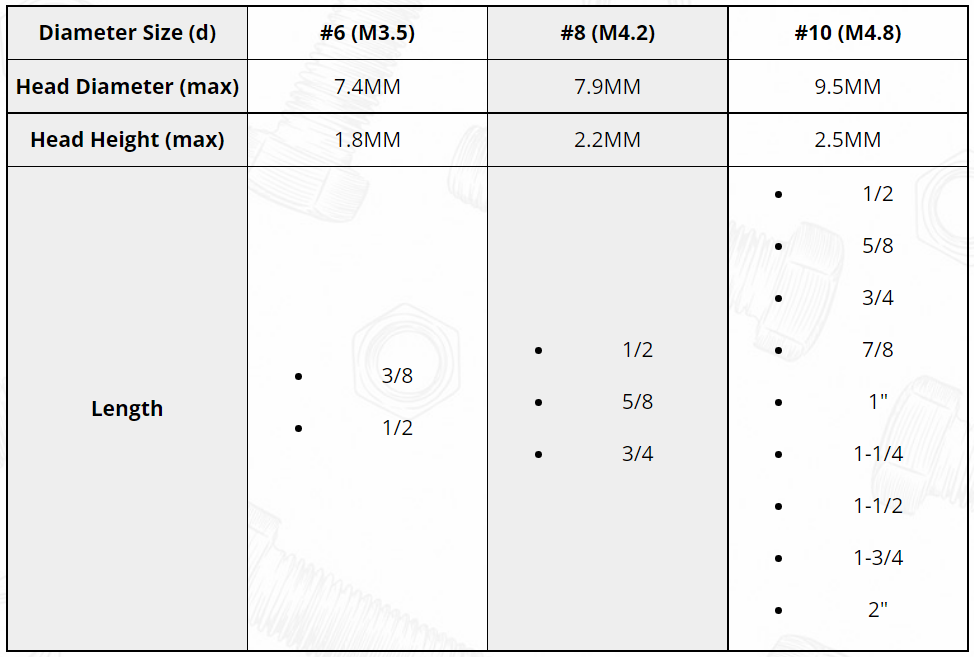Ceiling Drywall Screw Spacing Guidelines for Optimal Installation and Support
Understanding Drywall Screw Spacing for Ceiling Installations
When it comes to drywall installation, especially on ceilings, the importance of screw spacing cannot be overstated. Proper screw placement is crucial not only for the structural integrity of the drywall but also for the overall aesthetic finish of the ceiling. Whether you are a DIY enthusiast or a professional contractor, knowing the right spacing for drywall screws is essential for a successful project.
What are Drywall Screws?
Drywall screws are specially designed fasteners used to secure drywall panels to framing. They are typically made of sharp steel and feature a fine-thread design that helps grip the drywall for a strong hold. The type of screw and spacing used can greatly affect the quality of the installation.
Recommended Screw Spacing
The standard recommendation for drywall screw spacing varies depending on the application. For ceilings, it is generally advised to space screws no more than 12 inches apart along the edges of the drywall sheets and 16 inches apart in the field (the area away from the edges). This ensures that the panels are secured tightly, minimizing the possibility of sagging or cracking.
1. Edge Spacing Place screws approximately 8 to 12 inches apart along the perimeter of each drywall panel. The edges are critical areas that bear the most weight and stress. Using the closer edge spacing helps to prevent the drywall from bowing or pulling away from the framing.
2. Field Spacing In the field of the panel, where there are no edges, the spacing can be slightly more relaxed. A spacing of 12 to 16 inches between screws is suitable for maintaining enough support without excessive labor.
Installation Tips
1. Choose the Right Tools Use a screw gun or drill with a depth-sensitive attachment. This prevents over-driving the screws, which can damage the drywall. The screws should be driven just below the surface of the drywall paper without breaking through it.
drywall screw spacing for ceiling companies

2. Proper Alignment Ensure that the drywall sheets are aligned properly before securing them. Misalignment can lead to uneven surfaces, making it difficult to achieve a smooth finish.
3. Staggering Joints When installing multiple sheets, stagger the seams to enhance strength and reduce the chances of cracking. This means avoiding placing the ends of sheets on the same support joist, which can lead to weakness in the installation.
4. Support for Heavy Loads In areas where additional weight will be placed on the ceiling, such as light fixtures or ceiling fans, consider using additional fasteners and headers to provide extra support.
Avoiding Common Mistakes
One of the most common mistakes made during drywall installation is improper spacing of screws. This can lead to complications such as
- Sagging Ceilings Inadequate screw spacing can cause the drywall to sag over time, creating an unsightly appearance and needing costly repairs. - Cracking If screws are too far apart, the drywall may develop cracks along the seams, especially in areas subject to movement or vibration.
- Difficult Finishing If screws are not set properly, it can create an unbalanced surface when filling and sanding, leading to a less than perfect finish.
Conclusion
Understanding and applying proper drywall screw spacing is vital in ensuring a successful ceiling installation. By following the recommended guidelines of placing screws no more than 12 inches apart along the edges and 16 inches in the field, installers can minimize the risk of sagging and cracking while enhancing the overall durability and appearance of the drywall. Taking the time to adhere to these practices not only improves the structural integrity of the installation but also contributes to a beautiful and long-lasting ceiling finish. Whether you are a seasoned professional or new to drywall installation, mastering these techniques will help you achieve the best results possible.
-
Top Choices for Plasterboard FixingNewsDec.26,2024
-
The Versatility of Specialty WashersNewsDec.26,2024
-
Secure Your ProjectsNewsDec.26,2024
-
Essential Screws for Chipboard Flooring ProjectsNewsDec.26,2024
-
Choosing the Right Drywall ScrewsNewsDec.26,2024
-
Black Phosphate Screws for Superior PerformanceNewsDec.26,2024
-
The Versatile Choice of Nylon Flat Washers for Your NeedsNewsDec.18,2024










